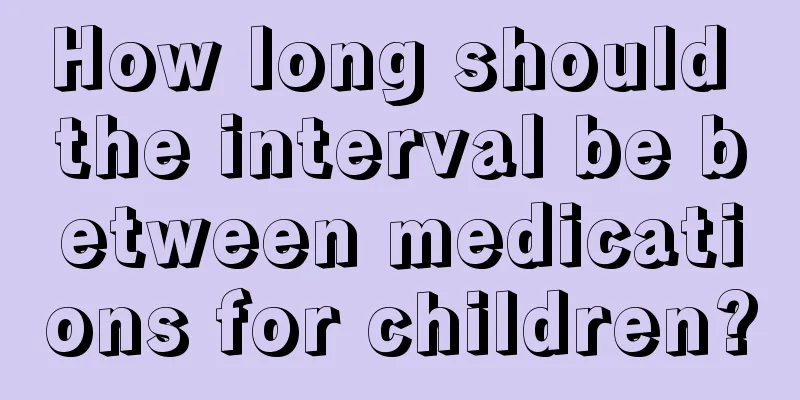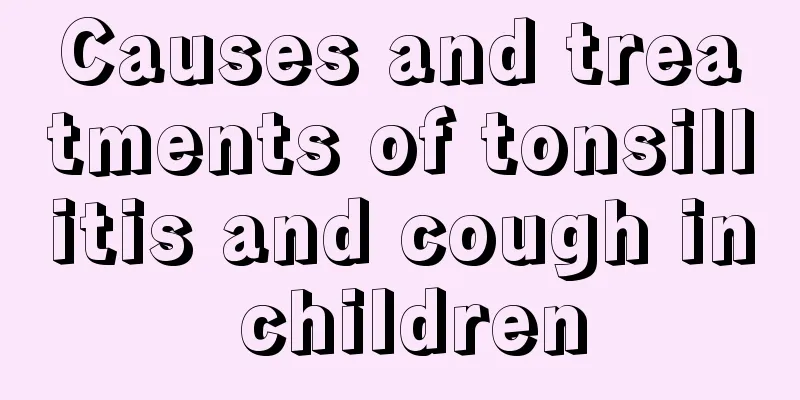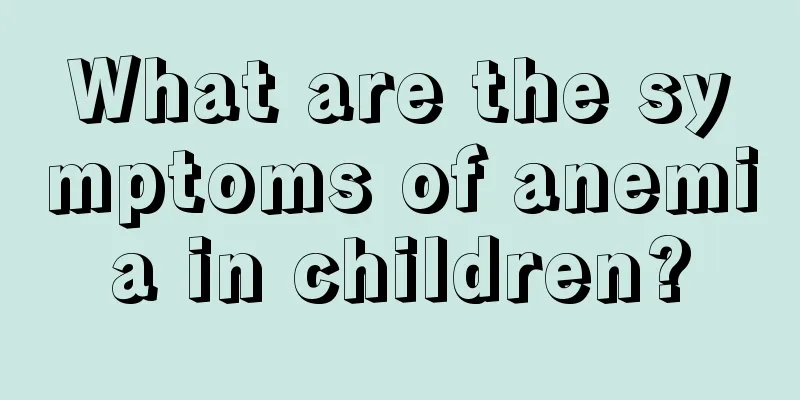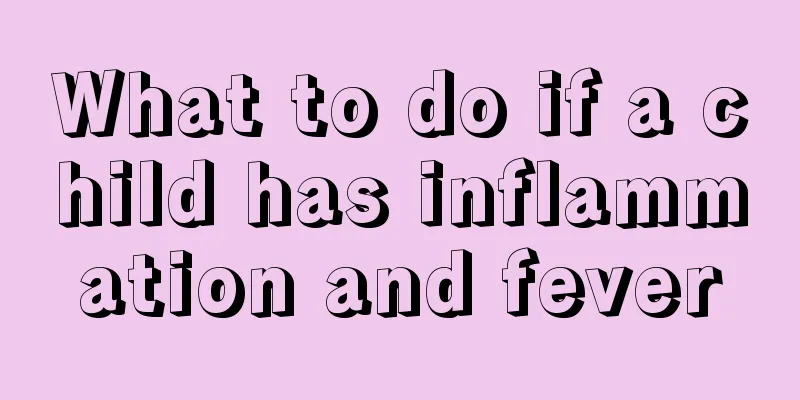What to do if your child keeps having a cold and cough
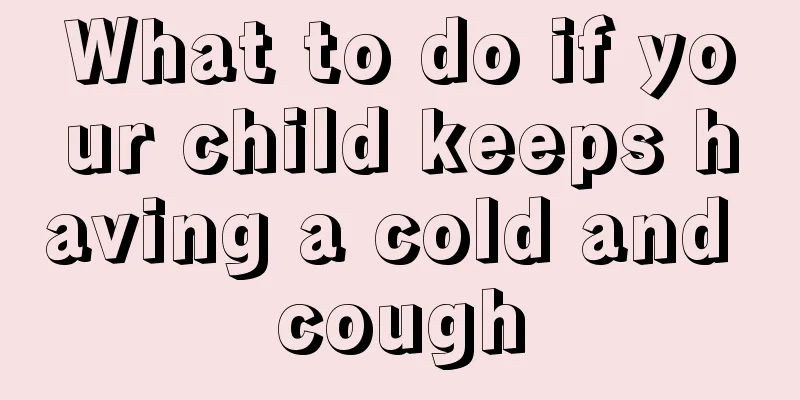
|
If a child’s cold and cough don’t get better, parents and friends will definitely be very worried. So what should we do if a child’s cold and cough don’t get better? Next, this article will introduce to you what to do if your child’s cold and cough don’t get better, for your reference only. Friends who want to know more about this can continue reading! Please see the detailed introduction below. What should I do if my child keeps having a cold and cough? The cough that children experience after catching a cold may be a direct symptom of respiratory infection, or it may be due to allergic factors induced by respiratory infection that lead to the persistence of cough symptoms, especially in certain seasons and under certain specific conditions (such as environmental pollution). Therefore, when a child has recurrent and persistent coughing, the child should be taken to a well-equipped hospital and treated by an experienced doctor to avoid affecting the timely and effective treatment of the disease. Children with colds and coughs can eat these: 1. Ginger: It is warm in nature and spicy in taste. It has the effects of dispelling cold, inducing sweat, relieving exterior symptoms and expelling wind. It is suitable for people with colds. People often use 3 slices of ginger, an appropriate amount of brown sugar, and boiling water to brew it, commonly known as ginger and brown sugar tea. Drinking it frequently will cure the disease by sweating. 2. Honeysuckle: It has a heat-clearing effect and is often used in traditional Chinese medicine to treat wind-heat colds. "Handbook of Commonly Used Chinese Herbal Medicines": "Honeysuckle clears away heat and detoxifies, and treats exogenous fever and cough. It can be made into a cold tea, or it can prevent heatstroke and colds." Those who suffer from summer heat colds, fever and sore throat should drink honeysuckle tea frequently. 3. Scallion white: It is warm in nature and spicy in taste. It can regulate body temperature, make the sweat glands work normally, and can reduce and prevent the occurrence of colds. Suitable for people suffering from colds and flu. 4. Perilla: It is warm in nature, spicy in taste, has the effects of sweating, dispelling cold and reducing fever, and is suitable for people suffering from colds. If people with qi deficiency catch a cold, they should use perilla leaves and rice to make a thin porridge. Because the unique aroma of perilla is perilla acetaldehyde, that is, perilla oil essence, which is easy to volatilize and emit, when cooking perilla porridge it is advisable to add 10 grams of perilla leaves when the porridge is almost cooked, just boil it slightly, and do not cook it for a long time. Parents should pay attention to the following aspects when caring for their children. 1. Drink water in small amounts and multiple times. The water temperature should not be too hot to avoid irritating the throat. 2. When a baby coughs violently, it is best to hold him up so that his upper body is at a 45-degree angle. At the same time, gently pat the baby's back with your hands to loosen the secretions adhering to the trachea and facilitate coughing out. 3. Maintain air temperature. Temperature and cleanliness are very important. The room temperature should be kept at around 20-26℃, with regular ventilation and indoor humidity at 50%-70%, which is conducive to diluting sputum and coughing it out. If the air is too dry, sputum will stick to the tracheal wall and be difficult to discharge. 4. If you have a severe cough at night, you can slightly raise the pillow to reduce the irritation of the throat by gastroesophageal reflux. The above is an introduction on what to do if your child’s cold and cough don’t get better. I believe that after reading the above introduction, you already know what to do if your child’s cold and cough don’t get better. In fact, if your child’s cold and cough don’t get better, in addition to active treatment, diet therapy is also a good choice! The dietary therapy recipes introduced above are all very good! |
<<: Why does a two-year-old baby sneeze and have a runny nose?
>>: Are babies afraid of heat or cold?
Recommend
What should I do if my 4 and a half month old baby has diarrhea?
A 4-month-old baby is still relatively young. If ...
What should I do if my baby has diarrhea after weaning?
Weaning means that our babies stop drinking breas...
What should I do if my child keeps coughing at night?
As children grow up, they will often develop some...
What is the cause of the child's tongue?
Children's tongue scratching is caused by ora...
How to supplement calcium for a 6-month-old baby?
Six-month-old babies can basically crawl and walk...
There is a small lump on the child's genitals?
If a child has a small lump on his genitals, it i...
What should I do if my baby has a lot of eye secretions?
The weather in summer is the hottest in the year....
How can children's eyelashes become longer and thicker?
Nowadays, women are very fond of beauty and often...
How to treat hand, foot and mouth disease in children? These are the methods!
Very young infants and young children have weak b...
What to do if your child doesn't like to wear shoes
Shoes are an important protector of children'...
What to do if a three-year-old child has diarrhea
Parents should pay attention to children's di...
What are the folk remedies for children's food accumulation?
Food accumulation in children is a common pediatr...
Does the child have vitiligo on his face?
It is quite common for children to have white spo...
Baby has diarrhea and anus is red and painful
Every baby is a little angel who brings endless j...
8 month old baby's daily milk intake
Babies grow very fast. In the blink of an eye, he...
